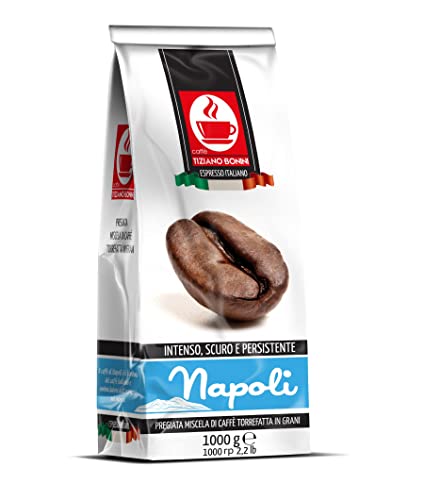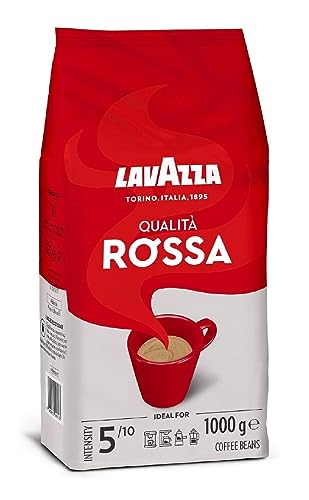The 10 Most Terrifying Things About Arabica Coffee Beans 1kg
페이지 정보

본문
 arabica coffee beans 1kg coffee beans price uk (www.google.Com.ai)
arabica coffee beans 1kg coffee beans price uk (www.google.Com.ai)The arabica bean is among the most sought-after varieties of coffee. It thrives at high altitudes near the equator and requires particular climate conditions in order to thrive.
Research into the bean has led to new cultivars that are more resistant to disease and climate change. These new varieties have unique flavors that differentiate them from the others.
Origin
Arabica beans are the most popular beans for Western coffee bean 1kg blends and account for around 60% of all coffee production around the world. They are more tolerant to drought and heat than other varieties of coffee beans 1kg arabica, which makes them easier to grow in warmer climates. They produce a rich and creamy drink that has a smooth taste. They also contain less caffeine. They are also an increasingly popular choice for espresso-based drinks.
Coffea arabica is an evergreen plant that grows in higher elevations. It prefers a tropical climate with temperatures ranging from 15 to 25 degrees Celsius. This plant needs constant rainfall of between 1,200 and 2,200 mm annually. It is a great source of genetic diversity. Researchers have created a variety of cultivars for cultivation. These include Bourbon and Typica, which are the ancestors of most modern arabica organic coffee beans 1kg cultivars today.
Wild plants belonging to the genus Coffea are bushy and their leaves are simple elliptic ovates to an oblong shape, 6-12 cm (2.5-3 in) long and 4-8 cm (2-3 in) wide. The fruits are drupes which contain two seeds that are commonly referred to as coffee beans. They are surrounded by an outer membrane of flesh that is usually black, purple or red and an inner skin that is usually pale yellow to pink.
In the past, people been able to enjoy raw coffee beans because of their distinctive flavor and stimulating properties. The Robusta variety is the most well-known blend of coffee, is best lightly or medium-roasted. This keeps its natural properties and flavor. The first written record of drinking coffee dates back to 1,000 BC in the Kingdom Kefa, Ethiopia. The Oromo Tribe members Oromo Tribe crushed the beans and mixed them with fat to make an alcoholic paste that was consumed as a stimulant.
The geographical location, the conditions and farming methods of the region from which coffee beans are harvested determine the specific origin of the coffee. This is similar to apples that are grown in a number of different regions and are distinguished by their distinctive flavor and texture. To determine the origin of a specific coffee bean, FT/MIR spectrophotometry can be used to detect indicators, such as trigonelline and chlorogenic acid, which differ based on the environment in which the bean was grown.
Taste
The flavor of arabica beans is smooth delicate and fruity, with chocolate undertones. It is not as bitter and astringency and is one of the highest-quality varieties that are available. It has a lower level of caffeine than Robusta, making it a perfect choice for those who like a cup of coffee without the high stimulants.
The roasting level, the processing method, and variety of arabica beans influence the flavor. There are a myriad of types of arabica coffee such as the Typica variety, Bourbon, Caturra, and Kona and each one has its own distinct flavor. Additionally, the various levels of sugar and acidity of arabica coffee may affect the overall flavor profile.
The coffee plant grows in the wild at high elevations along the equator, but is most commonly cultivated by people living at lower elevations. The plant produces fruit that are the colors of red, yellow, or purple which contain two seeds. These seeds are referred to as coffee beans, and they are what gives a cup of arabica coffee its distinct flavor. When the beans are roasted, they take on the familiar brown color and taste that we've come to be familiar with and enjoy.
After harvesting, beans can be processed either wet or dried. Wet-processed beans are washed to remove the pulp that is left behind and then fermented prior to drying in the sun. The wet method helps preserve the arabica coffee's natural flavor profiles, while dry processing results in a stronger and earthy flavor.
The roasting of arabica coffee beans is a crucial step in the production process, as it can dramatically alter the flavor and aroma of the final product. Light roasts showcase the arabica coffee beans' natural flavors while dark and medium roasts balance the origin flavors with roasted coffee characteristics. If you're looking for a cup of coffee that is truly unique, choose a blend with 100 arabica beans. These higher-quality coffee beans have a unique flavor and aroma that can't be replicated by any other blend.
Health Benefits
The caffeine in coffee provides the energy that you need to start your day. It also has numerous health benefits and keeps you awake all day. It is a distinctive and concentrated flavor that can be enjoyed in many different ways. You can enjoy it in a hot beverage or add it to ice cream or even sprinkle it on top of desserts.
Arabica beans are preferred by all coffee brands because they produce the perfect cup of coffee that has smooth and creamy texture. They are usually roasted to a medium-dark level and have a fruity or chocolatey flavor. They are also known for having a smoother taste and less bitterness than beans like robusta.
The history of arabica coffee beans dates back to the year 1000 BC when the Oromo tribes in Ethiopia first began drinking it as stimulants. In the 7th century, Arabica was officially named the coffee bean after it was transported to Yemen, where scholars roasted the beans and then ground them. They also created the first written record on coffee making.
Today, coffee beans are grown in over 4,500 plantations across India with Karnataka being the most prolific producer of it. In 2017-18, the state produced a record 2,33.230 metric tons of arabica coffee. Karnataka has a variety of arabica coffee varieties, including Coorg Arabica (also called Coorg Arabica), Chikmaglur Arabica (also called Chikmaglur Arabica), and Bababudangiris Arabica.
Green coffee beans are rich in quantities of chlorogenic acid which is a phenolic substance. They are believed to possess anti-diabetic and cardioprotective properties. Roasting beans eliminates around 50-70% or these compounds.
The arabica bean also has some vitamins and minerals. They are a good source of magnesium, potassium manganese, niacin, as well as manganese. The beans are a good source of fibre which aids in reducing cholesterol and aids in weight loss.
Caffeine Content
When ground and roasted the arabica beans have caffeine in a range of 1.1% to 2.9 percent. This is equivalent to 84mg to 580 mg per cup. This is considerably less than the caffeine content found in Robusta beans that can range from 1.1% to 4.4%. The exact amount of caffeine consumed will depend on a variety of factors, including the method of brewing, water temperature (caffeine can be extracted more easily at higher temperatures), and the method of extraction.
Coffee is also a major source of chlorogenic acids, which belong to the phenolic acid family and have antioxidant properties. These compounds have been shown to reduce the risk of developing diabetes, heart disease, and liver disease. They are also known to boost the immune system and promote weight loss.
Coffee also contains minerals and vitamins. It contains magnesium, Niacin and Riboflavin. It also contains potassium and a small amount of sodium. It is important to keep in mind that coffee in its natural form, with no milk or sugar, must be consumed in moderation as it can have a diuretic affect on the body.
 The history of the coffee plant is interesting. It was first discovered by Oromo tribes in Ethiopia around 1000 BC. It was used by the tribes to provide food on long journeys, but it wasn't until later it was cultivated into a beverage and was developed following the Arabian monopoly was removed which gave it its name. Since then it has risen to become a cult drink and is now a global industry with numerous benefits for the environment and human health. Its popularity is due to the fact that it is delicious tasting and many health-promoting qualities. If you consume it in moderation, it can make a great addition to your daily diet. In addition to being delicious, it can also provide you with energy and help you feel more alert and productive throughout the day.
The history of the coffee plant is interesting. It was first discovered by Oromo tribes in Ethiopia around 1000 BC. It was used by the tribes to provide food on long journeys, but it wasn't until later it was cultivated into a beverage and was developed following the Arabian monopoly was removed which gave it its name. Since then it has risen to become a cult drink and is now a global industry with numerous benefits for the environment and human health. Its popularity is due to the fact that it is delicious tasting and many health-promoting qualities. If you consume it in moderation, it can make a great addition to your daily diet. In addition to being delicious, it can also provide you with energy and help you feel more alert and productive throughout the day.- 이전글Espresso Machine Sale: A Simple Definition 24.12.20
- 다음글You'll Never Be Able To Figure Out This Bunk Beds Best's Secrets 24.12.20
댓글목록
등록된 댓글이 없습니다.




